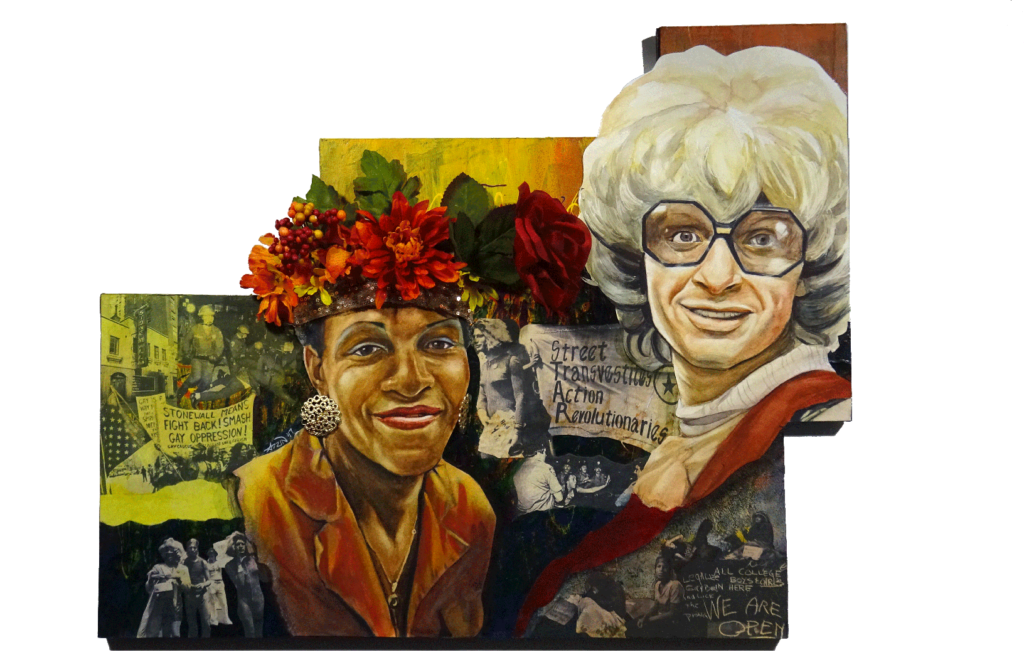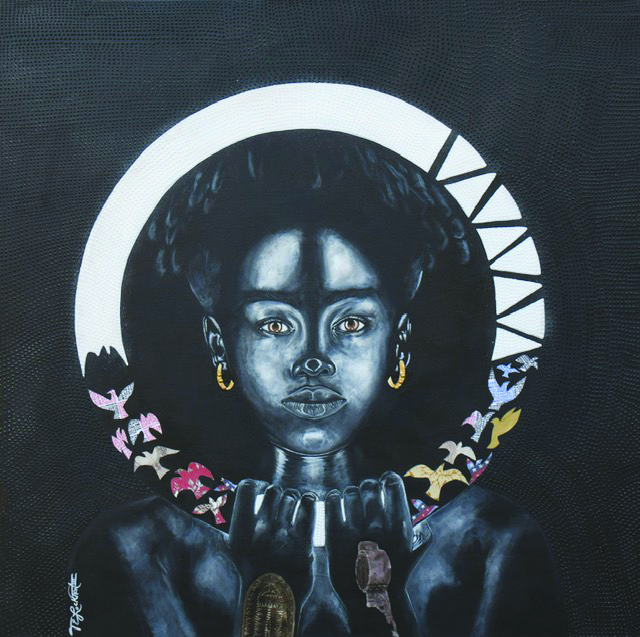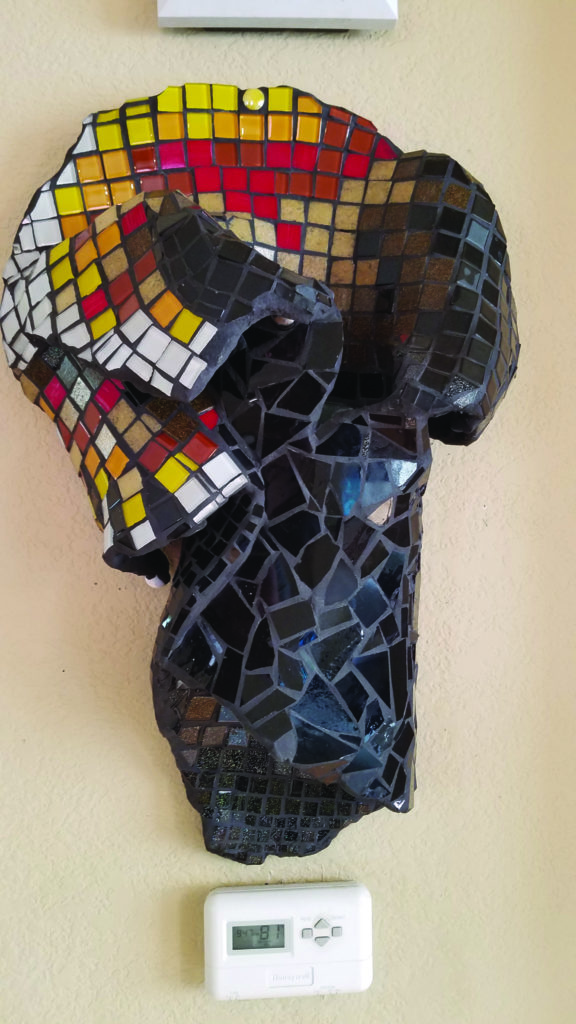
When your family has successfully organized and run a multi-day arts and culture festival each of the past 33 years, odds are you’re not going to let a pandemic stop you from pulling off the 34th.
“We always kind of check the pulse of what’s going on in the city,” says Florence Ayers, Colorado Black Arts Festival (CBAF) executive director. The festival was founded by her brothers, Perry Ayers and Oye Oginga, in 1986, and hasn’t missed a year since, rain or shine. “You’ve probably noticed that a lot of the Denver arts festivals didn’t go virtual this year,” Ayers adds, noting that the loss of some of Denver’s biggest summer fêtes — the Cinco de Mayo, Cherry Creek Arts and Dragon Boat festivals — left a gaping hole in 2020’s cultural scene.
“So we thought about it,” Ayers says, “And we decided we don’t want to miss a year. We’re not going to let COVID cancel this very important event. We don’t want to have our 34th year next year, we want to have it this year.”
So the 34th Colorado Black Arts Festival is going online, offering much of the same programming that has drawn as many as 100,000 patrons to Denver’s City Park in years past, like storytelling and hands-on activities in the Children’s Pavilion, music on the KUMMBA Stage (jazz, blues, neo soul, R&B), traditional African drumming and dance at the Joda Village Compound, live artist interviews, and maybe — “this hasn’t been set in concrete yet,” Ayers says — a socially distant version of the annual parade.
“The tradition of the Black Arts Festival is too important to be canceled,” she says. “It’s just so important to us to keep the tradition going. It’s important to have this celebration, whether it be in person or whether it be virtual.”
While the schedule for the festival is still developing, we talked to four artists who are participating this year.
Please visit colbaf.org for more information. Check in regularly for a full schedule.
Adrienne Norris, Afro Triangle Designs

Adrienne “Adri” Norris loves to learn, but she likes to joke that you wouldn’t believe that if you saw her grades from high school.
“If I’m honest, a big part of [the problem] was that I actually did not connect to the information at the time,” Norris says over the phone as we chat about her Women Behaving Badly series, multi-media pieces that tell the stories of women who history has relegated to footnotes — if it’s included them at all. Norris creates stunning, detailed watercolor portraits of women like Dolores Huerta, an American labor leader and civil rights activist who, with Cesar Chavez, co-founded what became the United Farm Workers; or Hedy Lamarr, the Austrian-American actress known for starring opposite Clark Gable and Jimmy Stewart, but whose contributions to frequency-hopping signal technology weren’t fully recognized until more than a decade after her death. The portraits are accompanied by collages that tell a story about each woman’s life — an art history lesson, if you will.
Norris’ father was an educator — a French teacher born and raised in Barbados — and it was his teaching position at the United World College in Montezuma, New Mexico, that led his daughter to a sister boarding school in Italy.

“[School] was very Eurocentric, and especially once I went to school in Italy … we’re learning, literally, European history that had nothing to do with me,” Norris says.
“By researching women in history, I’ve already got skin in the game just by virtue of being born female. By choosing to tell the stories of women of color, immigrant women from all walks of life, it gives me a much greater connection to history than I had ever been given before.”
Art has been a constant in Norris’ life since she was a child in the Bronx in the late ’80s, right after she, her mother and brother had moved from Barbados, where Norris’ father remained for several years until he was able to secure the teaching position in New Mexico. When her brother struggled to adjust to the move, it was his tutor who introduced Adri to a book of drawings by Leonardo da Vinci to entertain her while he taught her brother.
“That was the first time I realized that these pictures were created by people,” she says.
She took art with her from New York to New Mexico, then from New Mexico to Italy. Still, she hadn’t considered a career in art. At the end of high school, with what she saw as limited options, she entered the Marines.

Despite academic struggles, Norris excelled at languages. She was quickly placed in an intelligence program in the Marines, where she became an Arabic translator as the U.S. was entering the first years of occupation in Afghanistan.
“I did five years active duty and it was pretty much the weirdest five years of my life,” Norris admits. “It’s a very strange thing to do as far as I’m concerned.”
Determined to find another path in life, Norris left the Marines and applied and was accepted to the Art Institute of Colorado in Denver.
“I graduated with honors because after having had the military experience, I was like, OK, this is it now, if for no other reason than I don’t want to go back in,” she says.
Today Norris makes a living from creating art full-time through her business Afro Triangle Designs. She’s made education a key component of her business model, visiting schools and camps to teach young people about the importance of learning history, and about the power of art.
“[Women Behaving Badly] was kind of me taking over, sort of reconfiguring history education for myself and then putting it back out there for others,” she says.
Thomas E. Lockhart III, multi-media artist
Thomas Lockhart’s friends and family sometimes joke that when God was dishing out talent, Lockhart went back for seconds.
“So my art style [has] a lot of elements to it,” Lockhart says. “And I really pride myself in being able to move through different genres over time, just working in and out of different mediums and different styles.”
Browsing Lockhart’s online gallery is like exploring Picasso’s periods; there’s realism, surrealism, Cubism, post-impressionism. Much of Lockhart’s work taps into the story of the African diaspora.

Title: Piercing Beauty
Medium: Mixed Media on Gallery Wrapped Canvas
Size: 36×36 inches
Picasso himself was deeply inspired by African art after Henri Matisse showed him a mask from the Dan region of Africa. For a three year period at the turn of the century, Picasso painted in a style strongly influenced by traditional African masks and art of ancient Egypt.
Born and raised in Denver, Lockhart picked up art as a child, watching his cousin draw while they both spent time at their grandmother’s house. He loved art of varying styles, from cartoons to murals to fine art. After high school he went to college for graphic design.
He spent years working odd jobs, freelancing commercial art, developing his own fine art in his spare time. A local gallery in Denver took an interest in Lockhart’s art and began to move pieces around the country in the early aughts, but it wasn’t until 2017 that Lockhart felt compelled to take the plunge and make art his full-time gig.
He had spent the last eight years working concurrently as a corrections officer and bail bondsman — work that gave him a clear picture of the systematic oppression of black men in contemporary America.
“It was very difficult at many times,” Lockhart says of the work. “Once I [became a corrections officer], then I started doing a lot of reading and research and came to find out there are so many evils on the prison side — not only having to watch the prisoners but having to watch my own coworkers as well.”

Title: In the Dark, Still I Glow
Medium: Mixed Media on Gallery Wrapped Canvas
Size: 36×36 inches
Lockhart dove headfirst into the history of the American prison system, and the way it was used after emancipation to legally re-enslave black men.
“If you didn’t have a job, you could be arrested and thrown in jail,” Lockhart says of the fate of black men in the late 1860s. “You understand those slaves were just freed. Of course they didn’t have a job because the states would not allow them to work.”
Our conversation turns away from art and toward history. We discuss how American politicians of the 1970s “got tough” on crime, enlarging the penal system while decimating the welfare system — a plan that still guts black American families to this day. Lockhart talks about the Devil’s Punchbowl in Natchez, Mississippi, where 20,000 freed slaves were captured by Union soldiers and forced to live and work in a concentration camp. Many died of smallpox. Others — including women and children — died of starvation.
You can see Lockhart’s reverence for history in his art, in the farm workers, activists, musicians and mothers he paints.
“Art is history,” Lockhart says. “When you think back and you really want to find out what happened in history, somebody has drawn it. Somebody has brought it to life to be able to say, this is what happened in this particular time.”
Senakhu Donald, Intergenerational Women’s African Drum and Dance Ensemble (IWADDE)
When you watch Senakhu Donald lead her Intergenerational Women’s African Drum and Dance Ensemble (IWADDE) in kuku dance, you are witnessing a living art that has taken on many forms over many centuries.
“The dance of the fishes,” Donald says of the West African dance that was originally performed by women returning to villages from a fishing trip. “A lot of [African dances] had an original, specific reason for the dance, and it’s kind of grown into a celebration dance.”
For more than 30 years, Donald has practiced various types of African dance, beginning with capoeira, the Afro-Brazilian martial arts dance, when she was in college in Stanford in the late ’80s. Over the years she discovered kuku and majani, a dance of the Bamana people of Mali. Eventually her daughters joined her in African drum and dance groups that often practiced dances from West Africa, where much of the American slave trade originated. In this way, African dance is a direct line to ancestors who were ripped from their homes and forced into endless labor and unthinkable abuse.

Dance has provided a way for Donald to explore pieces of her heritage. Her name, Senakhu, means following the ancestors, she says.
“We always try to start out with what we call the libation piece,” Donald says of IWADDE performances. “We’re giving honor to our ancestors either through the actual process of pouring libation — water — to the earth, or [through] what we call moving libation [that everyone] participates in, drummers and dancers.”
Dance is like a prayer, Donald says, a way for humans to connect with pieces of themselves they didn’t know existed, to tap into buried emotions. In that way, IWADDE is a sacred space, specifically for black women, a place where there is no competition, only community.
“Sometimes you have dance troops and they’ll have… an intensity, let’s say, within the group,” Donald says with a laugh. “Even if it’s a more communal dance group, there’s still an intensity to it. But I did not want that. I really wanted [IWADDE] to be a group for fun, laughter, hugging — a safe space for black women, and that’s what it is.”
Donald has performed at every Colorado Black Arts Festival since its inception, and she wasn’t about to miss this one.
“When I was first contacted, I was like, yeah, no worries; if I can pull the people together, we’re willing to do it,” Donald says, “because it’s important just to keep that continuity and energetic space of doing this celebration year after year.”
Joice Thomas, Blackscape Studio, outdoor mosaic art

Joice Thomas may make art meant to withstand the unpredictable weather of Colorado, but that doesn’t mean it’s not fine art.
“One of the toughest jobs I have is explaining what mosaic art is,” says Thomas, who operates Blackscape Studio, creating African-culture themed outdoor mosaic art. “Because in [African American] culture, and I think most cultures, you don’t see mosaic art. It’s an old form of art [that existed] before Christ. You find it discovered in all kinds of places, way beneath the Earth, people in lost cities did mosaic art. … It’s even better than some of the fine art. And then you have the other end of it, which is more arts and crafts where you do flower pots and those kinds of things. Most people will come to me and say, ‘What is this?’ and they want to touch it. And it’s like, no, because it’s glass and it’s an uneven surface. …You wouldn’t go up to a Mona Lisa and rub your hand on it.”
Thomas has always loved gardens, especially the stone pavers and wrought-iron sculptures that turn botanical gardens into fresh-air art galleries.
But she was dismayed when she couldn’t find art that reflected African culture. So she decided to create her own.
She wanted to create statuettes of black children, but found that to be financially prohibitive. While at an arts festival in Delaware she saw a woman creating stained glass art and thought, “I could do that.”

“I picked up a[n instructional] book and started cutting glass and I absolutely loved it,” she says, and she’s been making mosaic art ever since.
Thomas’ pieces use traditional African motifs, like adinkra, which are symbols that represent concepts or aphorisms. The Ashanti people of modern-day Ghana often wear robes adorned with adinkra.
“My favorite [symbol] is the Gye Nyame,” Thomas says, an insignia that symbolizes the supremacy of God. “Religion is a big part of [black] culture, and when you go to a Baptist church or a black church, it’s an experience different from any other that you’ve been to. I can almost guarantee that.”
Thomas has begun to form 3D sculptures featuring various flags, like that of South Africa, which can be used to accent the home or garden. She plans to create a Pride flag 3D sculpture soon.
It’s taken her time, she says, to feel comfortable with her art.
“I used to feel intimidated by what people in my artist groups did, I always felt that I didn’t do enough,” she says.
“But [I realized] it’s not my job to make you feel comfortable about it. And that released me.”














